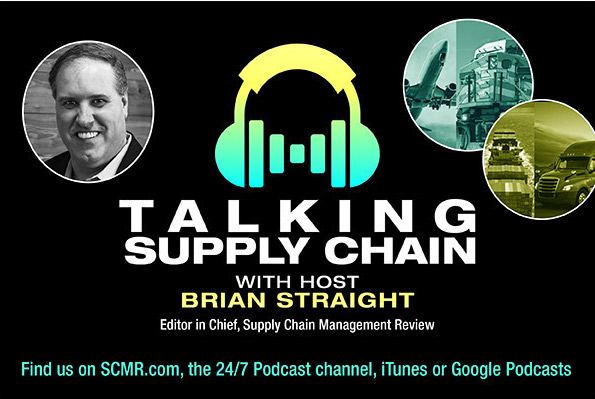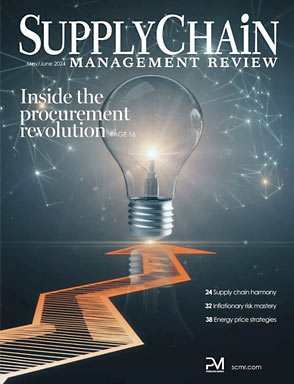Editor’s note: Leadership Lens, appearing online at scmr.com on the second Tuesday of each month, offers insight into leadership issues and how to address them. If you are interested in future topics, you can see a full list of upcoming topics on our Editorial Calendar.
Foodborne illnesses are on the rise, with outbreaks in 2024 leading to more hospitalizations and consumer concern than ever before. In this environment, companies in the food supply chain aren’t just delivering goods—they’re protecting public health.
Enter FSMA Rule 204, a key component of the U.S Food and Drug Administration (FDA) Food Safety Modernization Act created to improve traceability and accelerate the response to food safety incidents. The rule introduces strict recordkeeping requirements for high-risk foods such as fresh leafy greens, tomatoes, cucumbers, shell eggs, nut butters, and deli salads—all of which are included on the FDA’s Food Traceability List (FTL). From harvesting and cooling to receiving and shipping, businesses must capture and link key data elements (KDEs) at each critical tracking event (CTE) to ensure fast and accurate traceability across the supply chain.

While the FDA recently issued a 30-month extension from the initial January 2026 compliance deadline, that added time should not be viewed as a reason to delay. If anything, it creates a valuable window to get ahead. Waiting until the last minute could leave businesses scrambling to align people, processes, and technology under tight timelines—especially for companies managing multiple FTL items or global trading partners.
Food supply chains are a now problem—not a later one
The deadline for FSMA Rule 204 compliance may have been extended, but the risks are already here. Foodborne illness outbreaks and hospitalizations are climbing, and companies across the food supply chain are under pressure to detect and respond to issues faster than ever.
At the heart of FSMA Rule 204 is a push for greater visibility across the supply chain, requiring companies to capture and maintain KDEs and CTEs, and be able to produce that information for the FDA within 24 hours. Sortable spreadsheets may meet this requirement, but they can still fall short when speed and agility are most critical. Relying on fragmented systems—manual logs, siloed data, and inconsistent protocols—slows down response times, impairing flexibility when it matters most. Every minute of delay during a recall can escalate the damage: more consumer risk, greater financial loss, and long-term reputational harm.
That’s why the shift to digital traceability is more than a compliance play. Forward-looking companies are moving beyond spreadsheets to build connected, real-time systems that improve visibility, streamline reporting, and strengthen brand protection. It’s not just about being ready for 2028—it’s about being resilient today.
Digital traceability: A smarter, faster way forward
Companies that embrace digital traceability as part of FSMA Rule 204 preparation are gaining more than just compliance. They’re building supply chains that are smarter, faster, and more resilient in the face of disruption.
That transformation starts with standardized, structured data. Identifiers like Global Trade Item Numbers (GTINs) and Global Location Numbers (GLNs), built on GS1 Standards, allow businesses to consistently identify and share information about products and locations. Without shared standards, communication across the supply chain breaks down, especially in critical moments when time is of the essence.
When an issue arises, speed and clarity are essential. That’s where systems like Electronic Product Code Information Services (EPCIS) become invaluable. EPCIS allows every stakeholder in the chain to see what happened to a product, when, where, and why, all in a digital format that’s easy to share with regulators, stakeholders and supply chain partners.
But even the best systems won’t deliver results in isolation. End-to-end traceability depends on alignment across systems, data formats, and supply chain partners. Interoperable platforms that speak the same language can reduce recall response times from weeks to hours. Think of the difference this way: paper-based tracking is like a game of telephone, with each handoff adding distortion and delay.
Digital traceability is more like a group text with read receipts. Everyone sees the same information in real time, making it easier to act with confidence and speed. There are no lost notes, no delays, and no room for miscommunication. Just a clear, auditable trail that drives faster, smarter action. And importantly, these systems are designed to scale. While paper processes crack under pressure, digital platforms and emerging technologies are already proving their value in high-risk categories like seafood.
The shift is happening. The question is no longer whether transformation is coming. The question is whether your business will lead the path forward or lag in adoption.
Building a supply chain that’s ready for anything
Regulatory compliance is just the beginning. Businesses that take proactive steps toward digital traceability are setting themselves up to not only meet mandates but be better equipped to prevent and manage safety incidents, protect brand reputation, and respond confidently in a high-stakes environment.
Many companies are already piloting FSMA 204 compliance programs to gain hands-on experience and uncover operational gaps ahead of the 2028 deadline. Culinary Collaborations LLC, a premium seafood and sushi ingredient supplier, implemented a traceability system in preparation for FSMA 204 that allows them to track seafood from bait to plate—capturing critical data across oceans and continents, at every point in their supply chain. This kind of forward-thinking investment not only positions the company for regulatory success but helps corporate social responsibility and sustainability goals by establishing the legality of ingredients and validating sustainability.
At the same time, the industry isn’t navigating FSMA 204 alone. Eight leading food industry organizations—including GS1 US, FMI, IFPA, IFT, NASDA, AFDO, IFMA, and IFDA—have formed the Food Industry FSMA 204 Collaboration, a united effort to promote standardized practices and accelerate readiness across the sector. This cross-functional coalition is developing educational tools, championing data-sharing standards, and bringing public and private stakeholders together to reduce the burden of compliance.
Of course, digital traceability requires more than just technology. It demands strategic planning, collaboration with supply chain partners, and a willingness to evolve. Here are three key steps to build momentum and meet FSMA Rule 204 with confidence:
-
Conduct a readiness assessment: Where does your supply chain stand today?
Start by identifying gaps in existing traceability processes and technology. Can your systems capture and store KDEs and CTEs in a way that aligns with FSMA Rule 204 requirements? If not, this is the first area to prioritize. - Engage with supply chain partners to align on data-sharing protocols
Traceability is only as strong as its weakest link. Work with suppliers, manufacturers, and retailers to establish data-sharing agreements and ensure all stakeholders understand their role in maintaining compliance and operational transparency.
- Prioritize scalable, standards-based solutions for long-term success
Regulatory requirements and consumer expectations will continue to evolve. Investing in interoperable technologies built around clear standards can ease future transitions and enhance the ability to make real-time, data-driven decisions across the supply chain.
From playing telephone to leading transparency
FSMA Rule 204 may be the regulatory spark, but digital traceability is the real opportunity. Businesses leaning in now aren’t just preparing to meet requirements—they’re building faster, safer, and more transparent supply chains.
Acting early has immediate payoffs: improved recall readiness, stronger consumer confidence, and a clearer view across your operations. While 2028 might feel far off, the systems, partners, and standards that support traceability take time to implement.
If you’re wondering where to begin or how to benchmark your current systems, start with resources designed to guide companies through the FSMA Rule 204 landscape—like the GS1 US FSMA resource hub. It’s packed with tools and guidance to help you understand what’s required and how others are navigating the road ahead.
Traceability isn’t just a regulatory checkbox—it’s a long-term investment in trust and resilience. Start building a smarter, safer, and more connected supply chain today.
About the author
Ryan Richard is vice president, customer success at GS1 US. Richard develops engagement strategies that drive the adoption, use and adherence to global standards to solve common business problems. With a focus on the retail grocery and foodservice sectors, Richard manages collaborative industry efforts to help GS1 US members meet the needs of today’s consumers, including improving supply chain visibility, food traceability and product information transparency. Additionally, Richard aligns the organization’s member support and sales efforts with customer success strategies to further achieve the common goal of building long-term relationships with members and supporting their growth. Prior to joining GS1 US, Richard spent two decades with three top multinational corporations—Kraft Foods, Inc., Mondelēz International and Philip Morris. In these roles, he focused on business process harmonization, global data synchronization and the implementation of GS1 Standards to make the companies’ retail grocery supply chains more efficient.
SC
MR


More Food Supply Chain
 Explore
Explore
Topics
Procurement & Sourcing News
- C.H. Robinson rolls out AI agent to address LTL classification overhaul
- Danone latest to announce new US investment
- Uber Freight’s Val Marchevsky to deliver Keynote at NextGen Supply Chain Conference
- Unlocking the green grid: Innovations for eco-friendly last mile
- Dealing with supply chain complexities with scenario intelligence
- Securing critical minerals during a global trade war
- More Procurement & Sourcing
Latest Procurement & Sourcing Resources

Subscribe

Supply Chain Management Review delivers the best industry content.

Editors’ Picks




